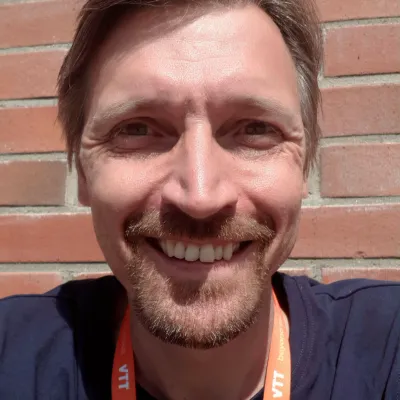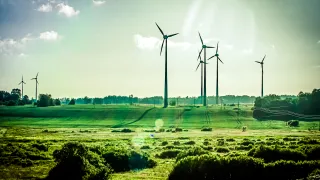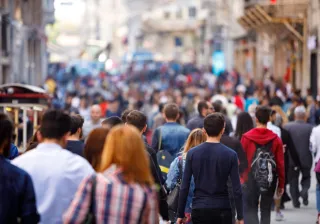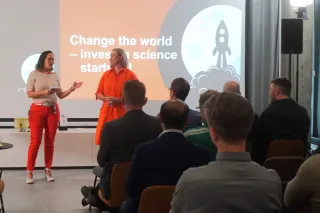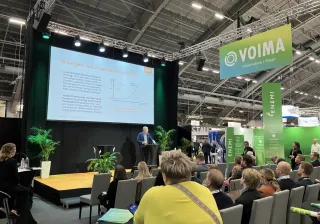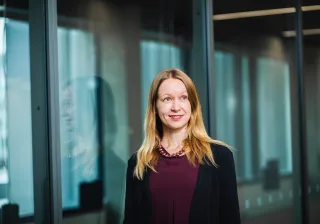The Kalasatama fishing harbour in Helsinki will become Finland's first model district for smart energy and urban construction, as well as the capital's first Smart City district.
In Kalasatama, heating energy will be provided by the SunZebsolution developed by VTT and Helen, whereas the power grid will be based on ABB's innovative ring network and Helen's new energy solutions. Both the heating and grid solutions represent new technologies.
For VTT, the smart grid used in Kalasatama will serve as a pilot for the innovative SunZeb model, developed in collaboration with Helen. The idea behind SunZeb is to combine quality residence with efficient energy consumption, while increasing the share of renewable energy, recycling energy flows and reducing emissions.
– SunZeb approaches issues holistically, with people at the centre, says Jouni Kivirinne, Development Manager at Helen. Kivirinne is a developer of the SunZebconcept, with the support of Jari Shemeikka, who is heading VTT's research team.
Kivirinne says that Finland has plenty of energy expertise.
– In Kalasatama's apartment blocks, as much solar thermal energy as possible will be extracted from the windows and stored for combination with district heating and cooling. In this way, the thermal overloading of buildings by the sun, which is often regarded as a problem, will be turned into a benefit, says Shemeikka.
Energy on residents' terms
Shemeikka emphasises that the goal of a smart energy solution is to provide residents with "the prerequisites for good living"; in other words, efficiency and economy are not the only drivers.
In the case of SunZeb, the design of an energy efficient apartment building or office is based on a district heating and cooling system that can recycle heat to district heating customers as renewable energy.
– Within buildings, heating and cooling systems are integrated so that the same internal equipment provides both, says Shemeikka.
The windows will be dimensioned to make the apartments bright and comfortable, while enabling the recycling of solar energy. In winter, this will be used for heating, while heat will be generated for the district heating system from the cooling required during the summer: water heated during the cooling process will be recycled to provide hot water via the district heating system.
– To maximise the efficiency of solar heat, account should be taken of the entire block, so that the heat generated from cooling the interior of one property can be used in other buildings, says Kivirinne.
SunZeb block 2020
The construction of the first SunZeb block will begin next autumn. The block will probably be ready sometime in early 2020.
According to the modelling calculations for the SunZeb concept, renewable energy can account for as much as 55 percent of heating energy.
However, Kivirinne says that 15–20 percent is a realistic estimate for the first block. The percentage will be reduced by screening, building height differences and other factors.
Kivirinne points out that the figures for the share of renewable energy in residential apartment blocks will not rise as high as for office buildings.
– I think that the share of renewable energy in the next blocks will be 20–30%. This growth in the share of renewables is also due to the increasing share of bioenergy in Helen's district heating production, he says.
CHP (Combined Heat and Power) cogeneration, which has proven efficient and economical in Helsinki, is winding down due to low electricity prices, which are making it unprofitable. The abandonment of coal power is accelerating this trend.
Helsinki intends to build three biomass plants dedicated to heat generation – in Vuosaari, Patola and Tattarisuo – to replace Hanasaari's coal-fired power plant. The plants will be completed by 2024.
The use of pellets has already increased in Salmisaari. There are also plans to convert the old oil caverns in Mustikkamaa and Kruunvuorenranta into gigantic hot water storage facilities.
Construction has already been underway in Kalasatama – which should be home to 25,000 people living and 10,000 jobs sometime in the 2040s – for five years or so.
ABB ring network
ABB's Finnish operation has supplied Kalasatama with a new kind of power grid solution. To ensure that the power supply is as uninterrupted as possible, Finland's first closed ring network has been built into the medium voltage grid, in which the power supply is continuously bi-directional.
At Kalasatama, this bi-directional power supply, which is already established in the transmission network, was introduced in a medium voltage grid's ring network for the first time.
ABB is also delivering digital switchgear, as part of smart transformer automation, for the district.
– To begin with, the ring network will supply electricity to the building site for the REDI shopping centre, and to the centre itself once it is ready next autumn, says Mika Loukkalahti, System Manager at Helen Sähköverkko Oy.
A closed ring network enables variation in the direction of power and fault current through a switchgear transformer. UniGear Digital switchgear can be used to manage variable electrical loads, on the basis of new types of sensor technology, process communication technology and new-generation protection technology.
– This is about trying out new technologies. It is a wholly new kind of technology which, as far as I know, ABB has not provided in precisely the same form anywhere else in the world, says Loukkalahti.
A closed ring network guaranteeing high reliability is somewhat more expensive to build than a conventional power grid.
Electric storage and solar power
Kalasatama will benefit from Helen's 320 kWp solar power plant, which began operating in Suvilahti in 2015.
A large battery-powered electric storage plant, provided to Toshiba by Landis+Gyr for two million euros, lies next to the solar power plant. This will balance electricity distribution by the smart grid.
The storage facility's 15,000 lithium-ion battery cells have a nominal power of 1.2 megawatts and an energy capacity of 600 kWh. The power storage facility was built in Suvilahti in the spring of 2016 and was commissioned later during the same autumn.
– The storage facility is intended for fast adjustment, in milliseconds, during disruptions in the electricity network's frequency. It will also improve the quality of electricity by regulating the power grid's voltage and contribute to idle power compensation, says Kristiina Siilin, a Project Manager from Helen.
– As part of a joint research project between Helen, Fingrid and Helen Sähköverkko, we will explore the overall operating logic – based on which a battery can be used to provide a system that supports all participants – with regard to the costs and benefits, he says.
A smart energy innovation platform is being built in Otaniemi
Finland is an outstanding country for testing and promoting new, innovative clean energy solutions. A high level of education, close cooperation between the private and public sectors, and strong infrastructure (including information technology) all play a role in this.
VTT is building an experimental piloting environment around Otaniemi's smart energy facility, in order to get closer to consumers and utilise various data in the development of energy services.
Otaniemi is in the City of Espoo, which aims to be a carbon neutral city by 2030: Otaniemi's R&D on smart energy is helping to achieve this climate objective.
The pilot environment will be built in close cooperation with Aalto University and an operator network consisting of various companies.
The first pilots will begin this year. The idea is to gather experiences and data on using the 5G network and IoT platform, improving the energy efficiency of buildings, more flexible electricity markets and options for charging electric vehicles.
– Pilot environments such as Otaniemi are indispensable, due to the systemic changes represented by the current energy transition, notes Tuula Mäkinen, Vice President, Smart Energy and Transport Solutions.
– Bold innovations should initially be tested on a smaller scale before being commercialised and integrated as part of larger energy systems, continues Mäkinen.
Otaniemi provides a good testing environment for a variety of new, smart energy technologies, services and business models.
– Smart energy pilot platforms will play a key role in the internationalisation of companies and commercialisation of services, Mäkinen speculates.
Using smart city solutions to make Helsinki green
Cities produce 70% of all greenhouse gas emissions globally. The City of Helsinki aims to be carbon neutral by 2035. This goal is also supported by the EU-funded mySMARTLife project, which involves e.g. testing an emission-free robot bus, as well as smart heat consumption control together with the residents of Merihaka.
As part of this project, the Metropolia University of Applied Sciences has been testing the robot bus since the summer of 2017. A smart minibus uses sensors to picture its surroundings and take account of other road users. This long-term pilot involves the study of new technologies in order to reduce the emissions and costs of public transport and explore passengers' attitudes to driverless vehicles.
This EU-funded project will also involve the testing of a multitude of other sustainable and smart construction, traffic and urban solutions. For example, residents of Merihaka are piloting smart heat consumption control, which can be tailored to the user's own needs at different times of the day. Smart heat control also makes it possible to study demand response, which will be used to flatten out consumption spikes in the future and thereby avoid use of the most expensive and polluting heating plants during cold spells.
MySMARTLife will also raise the energy efficiency of the Viikki Environment House by installing smart thermostats in offices and conference rooms. In the future, room temperatures can be adjusted intelligently in accordance with the purpose in question and to improve working comfort.
Solar energy for Korkeasaari and various districts
Korkeasaari aspires to carbon neutrality by 2025. Switching to renewable energy, reducing energy consumption and promoting low-emission transport form a prerequisite for achieving this goal.
For its part, Kalasatama is exploring the potential of Fiksu (Smart) Kalasatama to enable demand response on the power grid, while technological expertise in the nearby Suvilahti is being reinforced by combining know-how in power storage, solar energy production and the charging of electric vehicles.
The mySMARTLife project is being implemented by the City of Helsinki, Helen Oy, Forum Virium Helsinki Oy, the Metropolia University of Applied Sciences and VTT, as well as the SMEs Fourdeg Oy and Salusfin Oy. The European Commission has granted funding of EUR 18 million for the 2017-2022 project, as part of the Horizon 2020 research and innovation programme. A budget of EUR 5.6 million is available for the measures to be taken in Helsinki. The cities of Hamburg and Nantes are also involved in the project.
